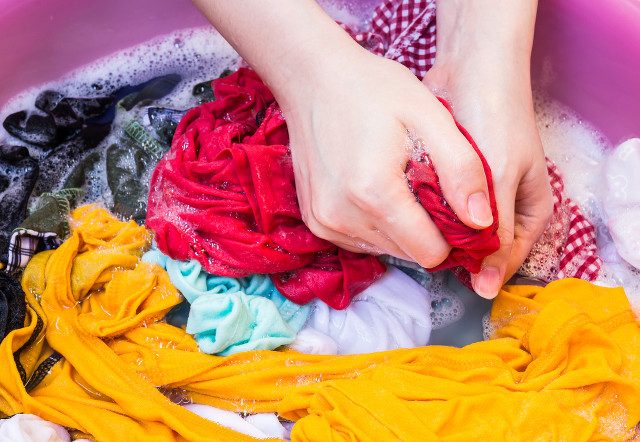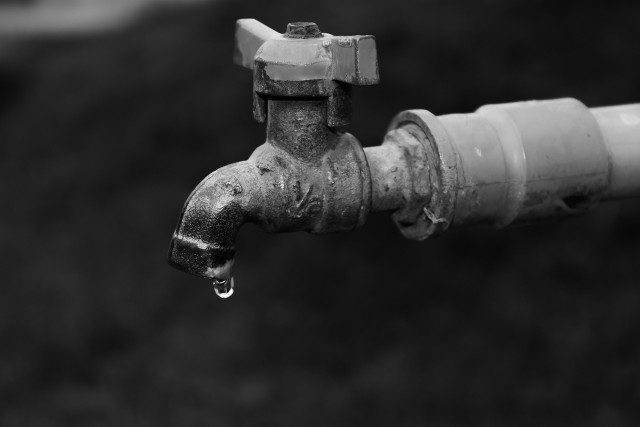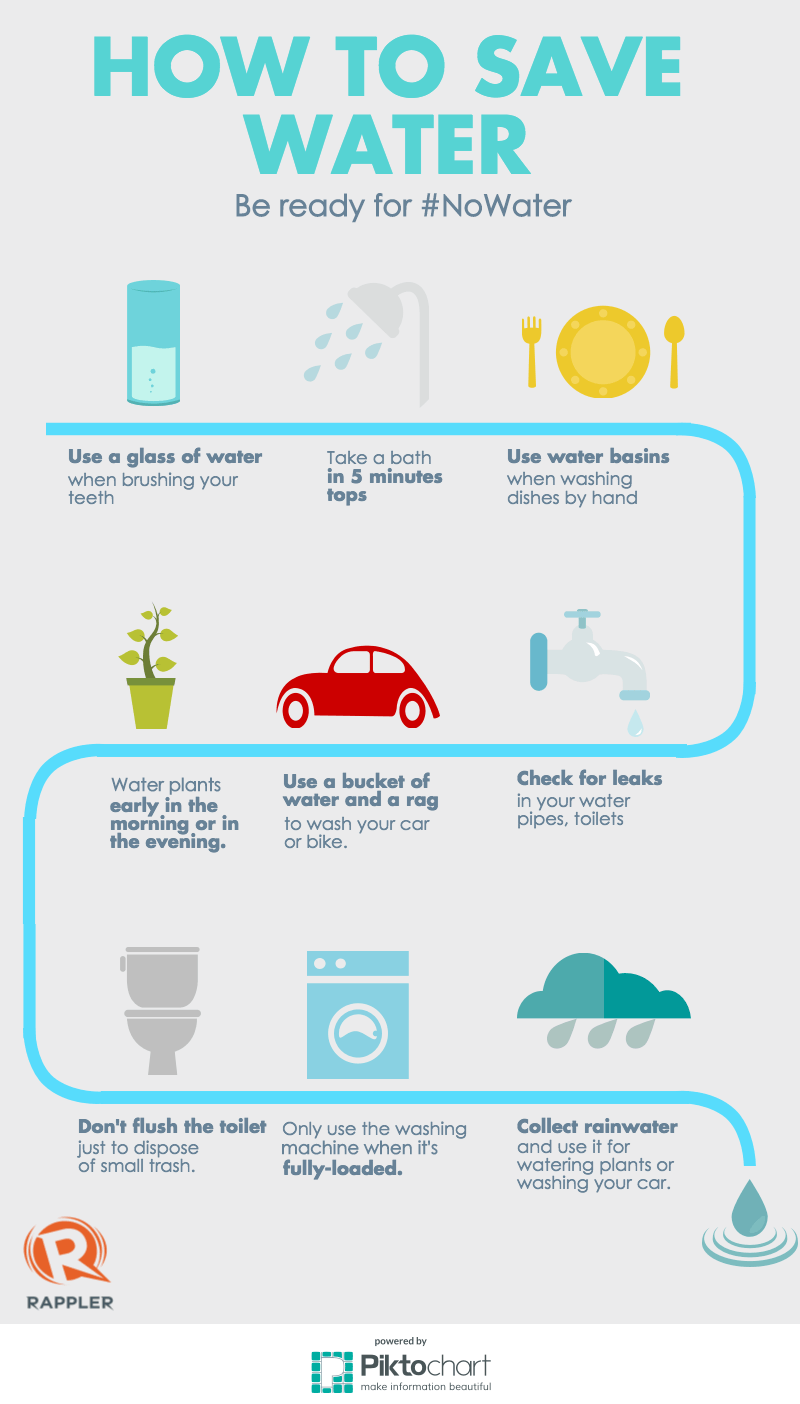SUMMARY
This is AI generated summarization, which may have errors. For context, always refer to the full article.

MANILA, Philippines – Starting this September, some 355,500 homes in Metro Manila may not have water coming out of their faucets for more than half a day.
The rest of the megacity’s residents will experience weaker water flow from their faucets. All this is because of the below-normal water levels in dams and the predicted intensification of drought in the region from September to February next year.
Every drop of water is precious. Each drop you waste could have gone to Bulacan and Pampanga farmers whose irrigation was cut off so that Metro Manila residents can have their water.
While the government says it’s helping farmers cope, Metro Manila residents can do their share by using water wisely. Here are simple ways:
1. When brushing your teeth
Kick the habit of keeping the tap on. Put water in a glass instead. Use it to wet your toothbrush and then use it to rinse when you’re done.
2. When taking a bath
Master the art of a 5-minute bath. Don’t keep the shower or faucet on the whole time. Refrain from using a bathtub which requires around 265 liters of water. A shower uses only 38 to 95 liters. Even better, don’t use your shower head. Time for the classic tabo and timba (dipper and pail) combo.
3. When washing dishes by hand
Again, don’t let the water run. If you have a double-basin sink, put soapy water in one basin and water for rinsing in the other basin. If your sink is a single-basin, put soaped dishes in a dish rack and rinse with a spray device or by pouring hot water.
4. When washing your car or bike
Using a hose can waste 23 liters of water a minute, according to the United States Environmental Protection Agency. Instead, use water in a bucket and a cotton rag.
5. When watering your garden
Don’t water your plants when it’s sunny and very hot. The water will just go to waste because it will have evaporated before the plants are able to absorb it. Instead, water your garden in the early morning or late evening.
You can also put 2 to 4 inches of organic material like bark mulch around the base of your plant. This will increase the soil’s ability to retain moisture.
Try recycling rainwater for this type of chore. Leave drums or pails outside to catch rainwater. After the rain, cover the drums to keep mosquitoes away. Then use the collected water for your plants. You can also use this for washing your car or bike.

6. When using the toilet
Only flush when needed. Avoid flushing just to dispose of cigarette butts, facial tissue, or other similar bits of trash. Flushing wastes 19 to 26 liters of water each time, according to green living website EarthEasy.com.
7. When washing your clothes
When washing by hand, use a basin or wash tub with just the right amount of water. No need to let the tap flow. Before washing, soak heavily-soiled clothes first so that it’s easier to remove the dirt.
When using a washing machine, only wash when it’s fully loaded so that the water use is maximized. Use only the right amount of detergent to lessen the need to rinse after.
8. When thawing food
Don’t thaw by putting the food under a running faucet. Think ahead – bring out the frozen food early enough so it has time to thaw at room temperature.
9. When maintaining your utilities
Make sure your water pipes and other appliances that use water are leak-free. A dripping faucet can waste 76 liters of water a day.
To check if your toilet has a leak, put some food coloring in the toilet tank. If the color starts to appear in the toilet bowl within 30 minutes without flushing, there is a leak. Have it repaired right away.
You can also use your water meter. Read the meter first then go two hours without using any water. Go back to the meter and check if it reads the same. If not, you have a leak.
Here’s a simple graphic:

Sources: National Water Resources Board, US Environmental Protection Agency, EarthEasy.com
– Rappler.com
Washing clothes image from Shutterstock
Faucet image from Shutterstock
Add a comment
How does this make you feel?
There are no comments yet. Add your comment to start the conversation.